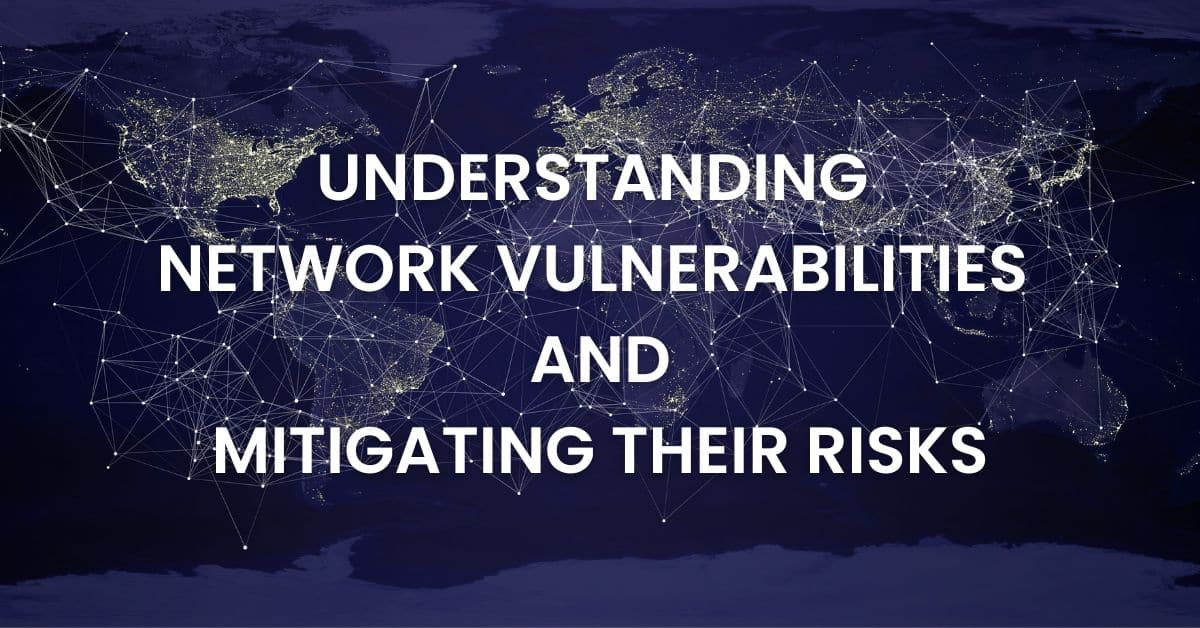Driving along on a dark highway late at night, you feel a jolt and hear a metallic crushing sound as your car hits an unknown object in the road. You nervously continue on your journey, until you see a bright light flashing on your dashboard. Your oil pressure is low because your car has been leaking oil since you hit that unknown object on the highway.
Much like an unknown object in the road that leads to a slow leak, a network vulnerability can lead to a devastating data leakage or breach. A network vulnerability is the small crack in your data oil pan that can give attackers unauthorized access to systems, applications, and data.
By implementing controls that limit a network vulnerability’s impact on systems, organizations can improve their security posture.
What Is a Network Security Vulnerability?
A network security vulnerability is a flaw or weakness in an organization’s network hardware, software, or processes that attackers can use to compromise the system and its data. Attackers actively seek to exploit network vulnerabilities to gain unauthorized access that allows them to steal data or spread malware, like ransomware.
Physical network vulnerabilities come from hardware flaws. Attackers look for weaknesses in devices like routers, servers, and network interfaces to intercept data-in-transit or control the devices. For example, attackers could exploit a vulnerability in a router to intercept data passing through it.
Non-physical vulnerabilities typically arise from applications that allow attackers to gain access to the network. For example, attackers can use an application vulnerability to gain access to the application then escalate privileges to move laterally to a network containing critical assets.
What are the three types of network vulnerabilities?
Network vulnerabilities can exist across hardware, software, or human error with each creating different risks that require separate risk mitigation strategies.
Hardware-based Network Security Vulnerability
Hardware-based vulnerabilities come from improperly managed and insecure devices connected to the networks.
Internet of Things (IoT) Devices
Smart devices, like cameras or sensors, often have limited security controls, like a lack of encryption or insecure default settings. When the devices have vulnerabilities, the manufacturers often fail to provide patches in a timely manner. Further, the devices do not have the processing power or memory to run traditional anit-virus or anti-malware programs so attackers increasingly use IoT-focused malware, like the Mirai variant, to control them as part of creating a botnet.
Unauthorized Devices
As more people bring their own devices to work, security teams need to consider the risks these pose to their networks. Attackers can target mobile devices with specialized malware so that when employees connect them to the corporate network, they propagate the malware to other devices. With no way to manage the applications people download or ensure employees apply security updates to them, security teams face risks when allowing people to use these devices for work
Removable Media
Removable media, like thumb drives or memory cards, are often left in public places hoping that people will be curious about the data on them and connect them to workstations, so that the malware they contain can execute on the employee’s device and spread across the network.
Wireless Access
An unsecured wireless network offers an open door to intruders who seek unauthorized access. For example, weak encryption protocols, like Wired Equivalent Privacy (WEP), can lead to rogue network access points that allow attackers to mimic legitimate traffic. Moreover, poor signal management can lead to signal bleed, making the network accessible beyond the intended area.
Software-based Network Security Vulnerability
Software vulnerabilities are common in networks due to unpatched or outdated software, default settings, and unauthorized software downloads.
Misconfigured Firewalls
Firewalls define the allowed and disallowed incoming and outgoing network traffic. As the organization’s environment becomes more complex, managing firewalls becomes more difficult. From simple mistakes like a typo to a failure to cleanup outdated rules, misconfigured firewalls can create network security gaps that allow attackers to gain unauthorized access.
Outdated Or Unpatched Software
Attackers often exploit vulnerabilities in the software or operating systems that run on network connected devices. With unauthorized access to these devices, the attackers can then either access the networks and move laterally across them to compromise sensitive systems and data.
Malware and Ransomware
When attackers deploy malware, like a virus, trojan, or ransomware, it creates a network vulnerability. While the malware itself is an attack, the ability to use the network for spreading the malware further is when it becomes a network vulnerability.
Human-based Network Security Vulnerability
While many people never intend to be an organization’s weak point, they often make mistakes that attackers use, especially as more people require remote or wireless access to the organization’s networks.
Phishing Email
When attackers send fake emails that trick users into giving up login credentials, the victim end-user creates a network vulnerability. While historically networks created an organization’s perimeter, today network access and user identity are the perimeter. With valid, leaked credentials, attackers can gain unauthorized access to networks while hiding as a legitimate user.
Pharming
Pharming redirects users from legitimate websites to fraudulent ones, exploiting DNS protocol vulnerabilities. Since an organization’s digital infrastructure and networks rely on DNS as their foundation, insecure DNS servers that facilitate harmful redirections become a network vulnerability, especially if attackers can control the organization’s domains.
Weak Passwords and Authentication Protocols
Weak passwords are among the most common network vulnerabilities, often exploited through methods like brute force attacks. Threat actors can easily guess simple or commonly used passwords, leading to unauthorized access and data breaches. Additionally, outdated authentication methods that lack advanced security features, like failure to implement multi-factor authentication, increase network security risks.
Accidental or Malicious Insider Threats
Insider threats arise when individuals within an organization misuse their access, whether intentionally or accidentally, causing harm. Employees, contractors, or partners may engage in activities like data theft or sabotage, compromising data integrity and the organization’s reputation. When users have more access than they need to complete their job functions, they may accidentally have unintended yet unauthorized access to sensitive data, and attackers can exploit this weakness.
What are best practices for mitigating network vulnerability risk?
Mitigating network vulnerability risks requires implementing a defense-in-depth security program that addresses the devices, software, and human risks related to unauthorized network access.
Scan for Vulnerabilities and Apply Security Updates
Regularly scanning for vulnerabilities and applying timely security updates helps address the security risks related to operating systems, firmware, and applications. By scanning networks to identify all vulnerabilities, you can look for the most recent updates to mitigate risks.
Segment Networks
By placing critical assets on a separate network segment, you can monitor those environments more carefully. Network segmentation mitigates risk by isolating network components, limiting inbound and outbound traffic to prevent lateral movement.
Modern micro-segmentation further improves security by removing reliance on outdated network structures. By strategically segmenting networks, organizations reduce the risk of widespread intrusion.
Incorporate Threat Intelligence
Real-time intelligence feeds provide insight into how attackers are exploiting vulnerabilities in the real world. With information about current attack methodologies, you can prioritize your remediation activities to ensure that you respond to the critical threats first.
Centralize All Monitoring in a Single Location
With a security information and event management (SIEM), you can aggregate security data from across the entire environment, including user, vulnerability scan, network traffic, and threat intelligence data. By correlating and analyzing this data, you can create risk scores to determine the highest priority alerts and respond more effectively.
Graylog Security: Contextual Risk Scoring that Incorporates Vulnerability Data
With Graylog Security, you can additionally amplify risk scores using the vulnerability scan information that you collect from all your assets. Instead of having to triage every single event, Graylog enables you to focus on the higher severity risk scores to streamline incident response activities and mitigate threats faster.
Graylog Security’s contextual risk scoring, powered by Adversary Campaign Intelligence, amplifies real threats and suppresses the rest. By leveraging threat intelligence and our risk scoring, you can prioritize responses based on asset criticality and connect the dots between alerts to reduce alert fatigue.
To see how Graylog Security gives you the SIEM that never asks you to compromise, contact us today.


